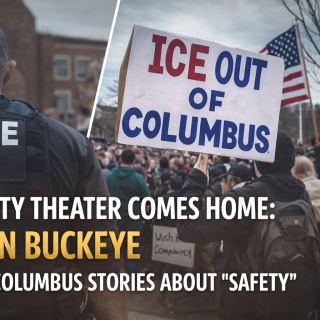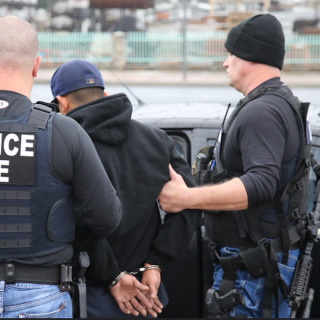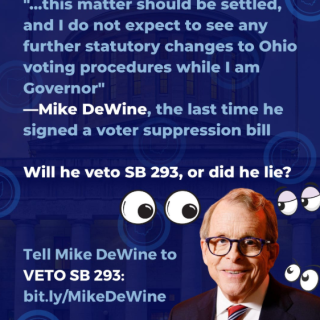Opens August 11
https://gatewayfilmcenter.org/movies/lakota-nation-vs-united-states-2023/
It's the most sacred place on earth, the birthplace of the Lakota that has shaped thought, identity and philosophy for the Očéti Šakówiŋ since time immemorial, the life-giving land known as the Black Hills. Yet with the arrival of the first Europeans in 1492, the sacred land has been the site of conflict between the people it has nurtured, and the settler state seeking to exploit and redefine it in its own image. This documentary is a searing testament to the strength of the Oyate and a visually stunning rejoinder to the distorted image of a people long shaped by Hollywood. "Lakota Nation vs. United States" is a lyrical and provocative testament to a land and a people who've survived removal, exploitation and genocide, and whose best days are yet to come.
Tens of millions of indigenous peoples inhabited North America, and governed their complex societies, long before European governments sent explorers to seize lands and resources from the continent and its inhabitants. These foreign European governments interacted with tribes in diplomacy, commerce, culture, and war, acknowledging Indigenous systems of social, cultural, economic, and political governance. Tribal nations have remained as political powers from the colonial period until today, engaging in commerce, trade, cultural exchange, and inspiring the principles of freedom and democracy enshrined in the US Constitution. As the United States formed a union, the founders acknowledged the sovereignty of tribal nations, alongside states, foreign nations, and the federal government in the US Constitution. Rooted in deep traditions and distinct ways of life, tribal nations are defined by Indigenous peoples, places, cultures, and governance.
When European settlers came to America, they dealt with tribes as sovereign nations. Exchanges of land and guarantees of peace were handled by treaty, and since then, hundreds of treaties between tribal nations and the United States have been negotiated by the President and ratified by two-thirds of the Senate. From 1778 to 1871, the federal government entered more than 370 treaties with various Indian tribes. Indian treaties have the same status as treaties with foreign nations, and because they are made under the US Constitution and are the supreme law of the land, they take precedence over any conflicting state law. These contracts represent an exchange and acknowledgement of certain rights, not a grant of rights, already held by tribal governments and peoples.
Tatanka Ptchela (Short Bull) was an active witness to the conflict between the two nations in the mid and late nineteenth century. He refused to sign the 1868 Fort Laramie Treaty and lived his life resisting the encroachment of Lakota lands. Five generations later the Oglala Tetonowan Oyate, and the Oglala Sioux Tribe, tries to get the Black Hills back. From the humblest of dreams, to the dedicated government-to-government conversations, it is time to tell the story of America’s longest running failure to do the right thing. While this history isn’t familiar to a majority of Americans, these landscapes certainly are. This rang true as our crew traveled through and around the Black Hills region on what felt like a surreal family vacation. Filming alongside tourists at sites like Mount Rushmore, the difference in these perspectives is consistently jarring. The systematic extermination of the American buffalo is now a 'Buffalo Hunt' roller-coaster adjacent to the set of "Dances With Wolves." From the outset of this project we feel a weight to visually represent the Black Hills as sacred and holy rather than a backdrop. The documentary uses the Sistine Chapel as a metaphor. In this way the visual approach often becomes shortened to film nature like a church.
Traditional tribal governments existed in the United States long before European contact and have evolved over time. The governmental status of tribal nations is at the heart of nearly every issue that touches Indian Country. Self-government is essential if tribal communities are to continue to protect their unique cultures and identities. Tribes have the inherent power to govern all matters involving their members, as well as a range of issues in Indian Country. Tribes form their governments either by election of members to a governing council as provided in a tribe’s constitution or, in some cases, by elders choosing the tribe’s leaders in a traditional process. Each tribe generally has one elected chairperson, president, chief, or governor who's the recognized leader of the tribe and who has authority to act as such when dealing with the federal government. Many tribes have organized their governments under the auspices of the Indian Reorganization Act (IRA) of 1934, and the Secretary of the Interior approves their constitutions and amendments.
American Indians are members of the original indigenous peoples of North America. Tribal nations have been recognized as sovereign since their first interaction with European settlers. The United States continues to recognize this unique political status and relationship. Native peoples and governments have inherent rights and a political relationship with the US government that does not derive from race or ethnicity. Tribal members are citizens of three sovereigns: their tribe, the United States, and the state in which they reside. They're also individuals in an international context with the rights afforded to any other individual. Land is of great spiritual and cultural significance to tribal nations, and many Native communities continue to rely upon the land for subsistence through hunting, fishing and gathering. Land-based production such as agriculture, forestry, mining, oil and gas production, and renewable energy play a prominent role in tribal economies. Moreover, Indian lands are critical for the exercise of tribal self-governance and self-determination. Indian country is a defined legal term for that area over which the federal government and tribes exercise primary jurisdiction. Land within existing Indian reservations constitutes the majority of Indian country. Reservations are defined geographic areas with established boundaries recognized by the United States. Some reservations are made up wholly of trust lands; other reservations include trust lands as well as fee lands owned by tribes, individual Indians, and non-Indians.
The narrative in popular Westerns has always managed to maintain a stronger hold on the American imagination than that of Indigenous people desperately defending their homelands to survive. But how do you simplify a complicated history without making it any less true? We know it's essential to weave together historical materials with the modern protest movement to show that this is a centuries long struggle that continues to this day. Equally important is to balance the economical exposition of white male newscasters with a narrator (Layli Long Soldier) that speaks to the actual Očeti Šakówin experience of those same events. With the new U.S. government leadership in place, there's a sense of urgency to tell this story. It's a real fear of mine that as time passes by, future generations will still be fighting for their right to their Sacred He Sapa (Black Hills). We’re all familiar with that phrase by Faulkner, 'The past isn’t really past at all'. We're able to capture a number of ways in which Americans interact with this story in the present day, a reenactment of Custer’s Last Stand, a ceremony to demonstrate the effects of colonization on Turtle Island. This is a story about enduring Lakota resistance and existence, but it’s also a conversation with the present. History repeats itself until we actually learn the history.
Most tribes give legislative authority to a tribal council. In some tribes, the tribal council members are elected by district; in others, they're elected at large. The council generally has authority to write tribal laws, and council members have administrative duties in some tribes. In some tribes, the tribal council elects the chief executive, while the voting citizens directly elect the leader in others. In most cases, the chief executive’s duties and powers are not specified in the constitution but are set in the bylaws. Consequently, the role of the chief executive varies greatly among tribes. Many tribes also have created their own court systems that administer codes passed by the tribal council. In many tribes, judges are elected by popular vote; in others, the tribal council appoints judges. Today, Indian tribes hold more than 56 million acres of land, approximately 2% of the United States. Most of these lands are in arid and remote regions. The largest reservation, the Navajo Nation, covers an area as large as West Virginia. Some reservations are as small as a few acres, and some tribes hold no land at all.
"Lakota Nation vs United States" is a comprehensive examination of the movement to eradicate the words, images, and gestures that many Native Americans and their allies find demeaning and offensive. The psychological research is clear, the use of Native American mascots is detrimental, not only to Native people, but to marginalized groups everywhere. The film explores the genesis of the exploitation of Native American culture. The documentary assesses the position of the American Indian community in moving this case forward by answering: Does there need to be a moral consensus among Native peoples before the majority of American citizens consider this an actionable cause, as a lack of consensus is an oft-cited argument by dissenters? Is the Indian community at all complicit in the slow progress of this movement? How has the historical marginalization of this small segment of the American population influenced the opinions of both Natives and non-Natives on this matter?
The goal of "Lakota Nation vs United States" is to provide answers to the aforementioned questions in a fair manner, and provide the viewer with a better understanding of the history and significance of this movement in today’s social and political landscape. Highlighting the convergence of multiple art forms, the film will include an original score to accompany the rich visuals. Lastly, the film looks forward at political activism among Generation Z, which appears to have a new worldview not only about issues including gun control and climate change. It's with this idea in mind that the documentary will express optimism that as these younger people become the policymakers of the future. "Lakota Nation vs United States" will employ these approaches to impart a vision to change the trajectory around negative stereotypes and counter outdated and psychologically damaging practices associated with the use of Native American imagery and symbolism.








